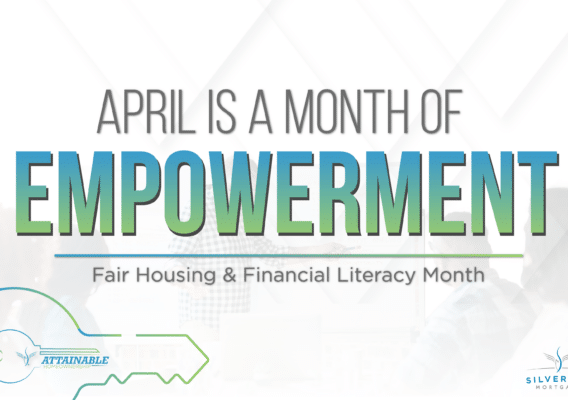Perhaps the scariest part of becoming a homeowner is simply getting started. It’s easy for any one’s head to start spinning once they look at everything involved with acquiring a home loan. While it may seem daunting, having the right people in your corner makes all the difference. Read on to learn the six steps that are involved in the mortgage process and determine if it’s something you’re ready to tackle.
Step One: Pre-Approval
During this stage of the mortgage process, a lender determines whether you’re qualified to borrow money. This is done by taking a close look at your credit, employment history, and income to verify the maximum amount you’ll be able to borrow. An experienced loan originator will use this information to help determine which loan program is right for you, taking into account down payment amount and available interest rates. Once pre-approved, you’ll get a letter stating that you can indeed afford a home loan up to a certain value. This is the green light to start house hunting. Your pre-approval gives you an idea of how much you can afford and lets sellers know that you’re a serious buyer. The key to a successful pre-approval is working with a trusted loan originator who can help you qualify for the appropriate mortgage.
Step Two: Submit Initial Documents
After the pre-approval process, you’ll have to determine the type of mortgage loan that is appropriate for you and submit specific documents to verify your income and prove that you’re able to afford the loan. This typically includes your previous two years of tax returns and W-2’s along with 30 days of pay stubs. You’ll also have to disclose any additional income such as alimony, bonuses, freelance work, etc. This information is used to show that you have the funds for a down payment, closing costs, and any other fees that may occur.
Requirements vary based on your loan type, but a credit check is also necessary. Typically, lenders require a FICO score of 620 or higher to approve a conventional loan. A lower score doesn’t necessarily mean all is lost; there are several options still available, but they may include loans with higher interest rates.
Step Three: Processing
Once initial documents are submitted, an experienced processor reviews, packages, and monitors your loan request. A processor collects all the information needed to approve the loan. They also contact credit bureaus, employers, accountants, and anyone else needed to verify your information. When it’s time, the loan processor will order the home appraisal, ensure proper policies are being followed, and orders the final loan documents needed. Your processor will also be the one who schedules your closing appointment. The processor is a crucial element in the loan process as they keep your loan on track from start to finish.
Step Four: Underwriting
Once the processor has gathered all the supporting documentation, your loan is sent to the underwriter. It’s the underwriter’s job to review it and assess a lender’s risk in working with you. If they’ve determined that the loan is something you can manage, they’ll issue a mortgage commitment. To reach that conclusion, the underwriter will look at your credit history, proof of income, debt-to-income ratio, savings, and any other factors that help them determine whether you’re financially ready for the responsibility of a mortgage. It’s also their job to look at the value and type of property in question to ensure that the mortgage terms are fair for all parties.
Step Five: Pre-Closing
Once your loan has been underwritten, it’s time to finalize all the details of your loan with the lender and get everything in place for closing day. This includes conducting a walkthrough of the property and securing homeowners’ insurance set to go into effect the day you move in. Doing your due diligence during the pre-closing ensures a smooth closing day for you and everyone involved. Your closing attorney will also send you electronic wiring instructions for your down payment and closing fees.
Step Six: closing
This is the final step to becoming a homeowner. The good news is that the brunt work has already been done. Now, all that’s left to do is sign lots of paperwork and confirm your electronic wire has been received. You’ll also need to bring a photo ID. When it’s all said and done, you’ll get the keys to your home! Your first mortgage payment will be due one month after the last day of the month you close.
While it can seem overwhelming to embark on the journey of homeownership, it’s important to remember that you have a lot of people working on your behalf who can help you through the process. From beginning to end, the mortgage process typically takes around 41 days and while it may be strenuous, the result is a home of your very own.
You Might Also Like

The Foundation of Well-being: How Homeownership Builds More Than Just Equity

Navigating the Mortgage Maze: The Mortgage Process Simplified

